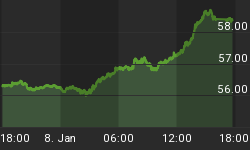An additional 25-percent tariff on $16 billion in Chinese imports covering 279 products came into effect today, in a move that has led to an immediate and equally harsh retaliatory tariff from Beijing.
The U.S. tariffs affect chemical products, semiconductors, motorcycles, speedometers, antennas, and railway cars, among other things, and China responded immediately with 25-percent tariffs on an equal amount of American goods, including chemical products, buses and diesel fuel.
Representatives from the U.S. motorcycle industry, electric bicycle makers, food equipment manufacturers, and chemical companies have voiced their opposition to this round of tariffs, in vain.
The U.S. is now officially charging a 25-percent tariff on a total list of $50 billion in Chinese goods after tariffs on $34 billion in Chinese goods went into effect in July.
Trump has also proposed another possible round of tariff hikes that would see 25-perent tariffs slapped on another $200 billion in Chinese goods, while Beijing has prepared a list of $60 billion in American goods that would be targeted in retaliation.
China has slightly less leverage in this battle because fewer goods are exported to China and Beijing has more to lose because it runs a trade surplus with the U.S.
In June, in a bid to avert a full-blown trade war, Beijing proposed the purchase of nearly $70 billion in American products, including a significant amount of liquefied natural gas (LNG). Washington rejected the proposal and Beijing threatened to include oil in its list of tariffs though that has not yet materialized. Related: Is This One Of The Most Exciting IPOs Of The Year?
Earlier this month, China proposed a 25-percent tariff on U.S. LNG imports as part of the next phase of trade war escalation.
China is expected to be the largest growth market for LNG for the foreseeable future, and several LNG exporters in the U.S. are eyeing China as their key market. Still, it is unclear how much of an impact tariffs will have since LNG cargoes can simply be rerouted elsewhere.
The U.S. goods trade deficit with China totaled $375.23 billion last year, nearly half the U.S. trade deficit globally, according to U.S. Commerce Department data.
The data released by the department showed that the U.S. trade deficit dropped in June to the lowest level in 19 months but the trade gap between the United States and China increased sharply, expanding 18.7 percent in June from the previous month to $33.19 billion.
The fresh increases came as envoys met in Washington for their first high-level talks in two months, but many are not expecting any form compromise soon. Previous negotiations failed to produce any lasting deals, and Trump has suggested the current talks may not be much different.
The skepticism is also shared by Moody’s, which noted in a recent analysis note to investors that U.S. trade tensions with China are likely to worsen this year, weighing on global growth in 2019.
“Most of the impact of the trade restrictions on economic growth will be felt in 2019,” and any additional tariffs would be a “material downside scenario,” the report noted.
By Fred Dunkley for Safehaven.com
More Top Reads From Safehaven.com

















